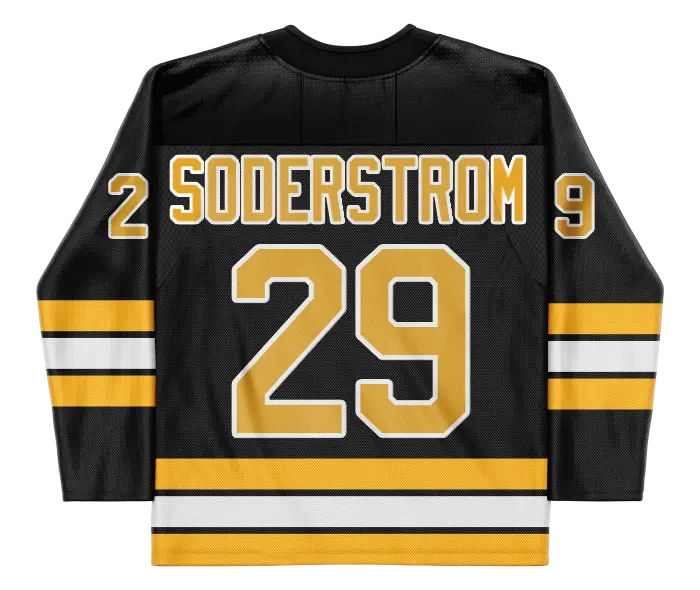
NHL Transactions & Roster Moves


This is reportedly just a paper transaction as Meyers is still expected to report to Anaheim. Meyers is an undrafted 25-year-old who has played 53 career NHL games, all with the Colorado Avalanche, including nine this season. Most of his 2023-24 campaign has been spent with the Colorado Eagles (AHL), where he has 25 points (11G / 14A) in 32 games.

This is reportedly just a paper transaction, with Zellweger still expected to play against the Stars on Friday night. Zellweger has no goals and two assists in seven NHL games this season.

Regenda made his season debut on Thursday will report back to San Diego on Friday. He has 16 goals and 13 assists in 38 AHL games this season.

Gawdin made his season debut on Thursday but will report back to San Diego on Friday. His demotion makes remove for the arrival of the recently acquired Ben Meyers.

Soderstrom has played just a single NHL game this season. He has eight goals and 17 assists in 50 AHL games this season.

Ginning will return to the AHL after making his NHL season debut for the Flyers on Thursday. Ginning has two goals and 11 assists in 52 games with Lehigh Valley this season.

Lycksell will return to the AHL after a four-game stint with the Flyers. He is yet to register a goal but has managed three assists in nine games with the Flyers this season.

Fix-Wolansky is currently third in AHL scoring with 23 goals and 54 points in 51 games played but will put a halt to his production as he earned his second promotion of the season to Columbus on Friday. The 24-year-old offensive right-winger had appeared in one game early this season for the Blue Jackets, but failed to put up any counting stats across 12:32 TOI.

With Vegas making a flurry of deals at the trade deadline, Byron Froese finds himself the odd-man out of the Golden Knights roster and has been reassigned to Henderson (AHL). The 32-year-old veteran had failed to produce in his 16-game showing with Vegas, with only one assist, 17 SOG, four PIMs and a -2 plus/minus.

Morelli was the odd man out of the Golden Knights' roster after Friday's trade deadline deals and was reassigned to Henderson (AHL). The 28-year-old left-winger impressed during his first, but limited appearance with the Golden Knights with three goals, four points, nine SOG and a -3 plus/minus in nine games played.

Lilleberg made a strong impact in his first career appearance with Tampa Bay but has been reassigned to Syracuse (AHL) after the Lightning made some deadline acquisitions. The 23-year-old Norweigan rookie will head back to the minors with three assists,17 SOG, eight PIMs and a -14 plus/minus in 23 games played with Tampa Bay.

Crozier was the odd man out of Tampa Bay's roster after their trade deadline acquisitions and will head back to Syracuse (AHL) on Friday. The 23-year-old rookie did well in his first NHL showing, with two assists, seven PIMs and a -2 plus/minus in 13 games played.

With Johnson being reassigned to the Rochester Americans (AHL), Kyle Clague was recalled by the Sabres. Johnson has spent the majority of his first professional season with the Sabres, tallying seven points (0G / 7A) in 41 games.

Ryan Johnson was reassigned to the Rochester Americans (AHL) on Friday, allowing the Sabres to recall Clague. The 25-year-old Clague has spent most of the season in the AHL, tallying 23 points (3G / 20A) in 42 games with Rochester.

The Blue Jackets acquired Jakub Zboril and a 2027 third-round pick from the Bruins for Andrew Peeke on Friday. Zboril has spent the entirety of the 2023-24 campaign, posting nine points (0G / 9A) in 31 games with the Providence Bruins (AHL). The 27-year-old defenseman is an impending unrestricted free agent.

Raanta, Tony DeAngelo, and Brendan Lemieux were all placed on waivers by the Hurricanes on Thursday as the team was clearing cap space toward their eventual acquisition of Jake Guentzel. Raanta has struggled this season, including being placed on waivers earlier in the year, and has a 2.99 GAA and .872 SV% through 24 games this season (12-7-2).

Oesterle made his first appearance in the Flames lineup in nearly two months earlier this week, playing 14:07 time-on-ice and recording two hits. Oesterle has no goals and two assists in 22 games this season.

Podkolzin just played his first three games with Vancouver this season, being held off the scoresheet while averaging nearly 11 minutes of ice time. He has spent most of the 2023-24 campaign with Abbotsford (AHL), where he has 28 points (15G / 13A) in 44 games.
